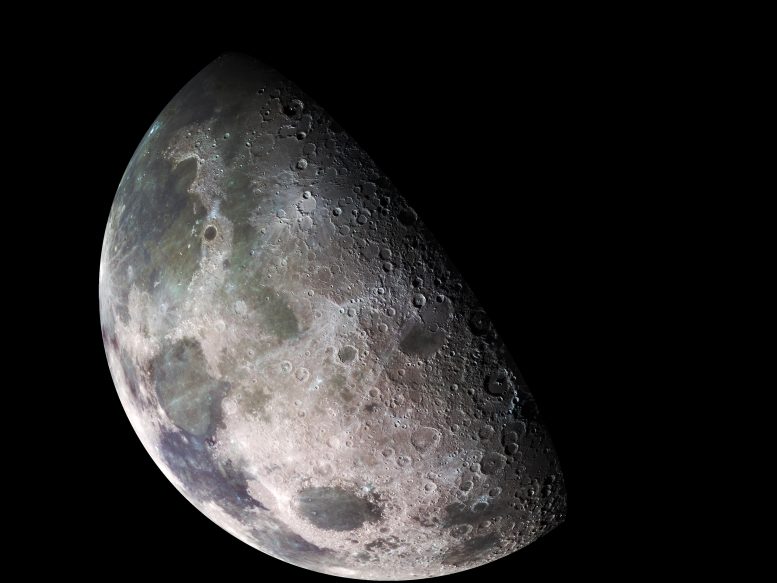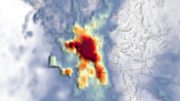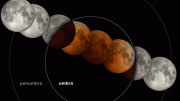
During its mission, the Galileo spacecraft returned a number of images of Earth’s only natural satellite. Galileo surveyed the moon on December 7, 1992, on its way to explore the Jupiter system in 1995-1997. This color mosaic was assembled from 18 images taken by Galileo’s imaging system through a green filter. On the upper left is the dark, lava-filled Mare Imbrium, Mare Serenitatis (middle left), Mare Tranquillitatis (lower left), and Mare Crisium, the dark circular feature toward the bottom of the mosaic. Also visible in this view are the dark lava plains of the Marginis and Smythii Basins at the lower right. The Humboldtianum Basin, a 400-mile (640-kilometer) mpact structure partly filled with dark volcanic deposits, is seen at the center of the image. Credit: NASA/JPL/USGS
Below are two new videos released from NASA showing the evolution of the moon and a narrated tour of the moon.
A Narrated Tour of the Moon
Although the moon has remained largely unchanged during human history, our understanding of it and how it has evolved over time has evolved dramatically. Thanks to new measurements, we have new and unprecedented views of its surface, along with new insight into how it and other rocky planets in our solar system came to look the way they do.
Evolution of the Moon
From year to year, the moon never seems to change. Craters and other formations appear to be permanent now, but the moon didn’t always look like this. Learn about how the moon evolved from its early state to how it looks today in this new animation!
Watch the videos above to learn more about the moon.









Be the first to comment on "New NASA Videos of the Moon"